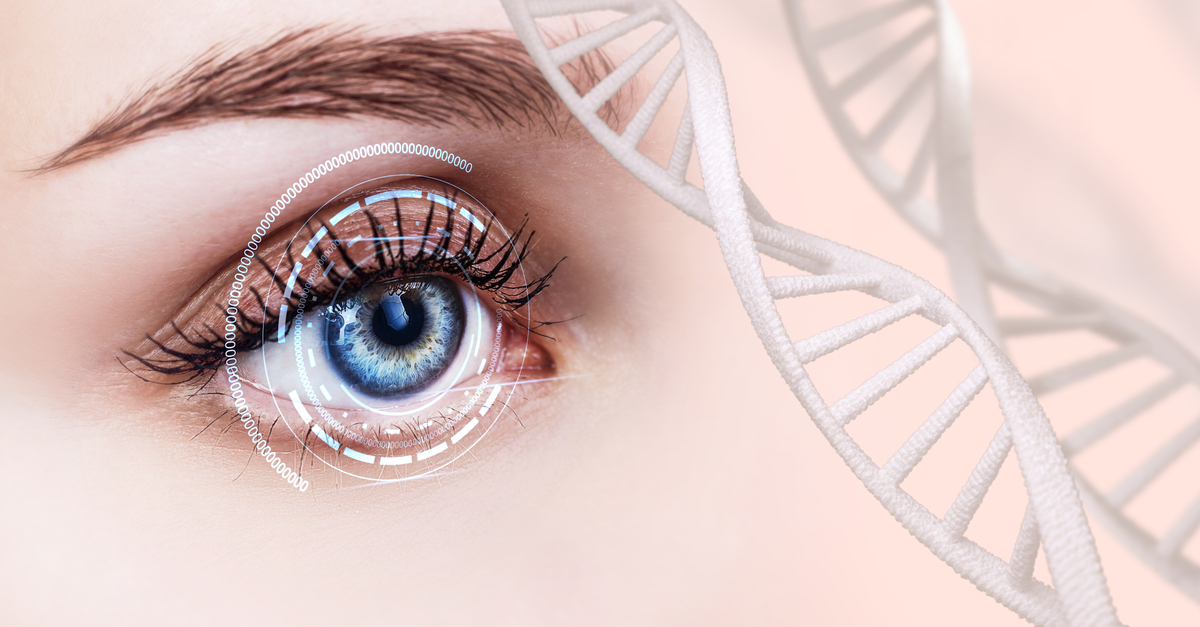Gene therapy is an exciting—and relatively new—area of medicine. Treatments were first introduced in the 1970s, but after decades of methodology challenges and scientific frustration, the concept of altering genes to address “untreatable” viruses and diseases gained traction again in the 2000s.
This resurgence began in 2008, and by the first half of 2021, the number of active cell and gene therapy developers reached 1,195 worldwide. The number of clinical trials sponsored by private companies, governments, and academic institutions reached 2,600, and of those trials, 243 reached Phase 3 development.
Gene therapies are particularly effective in combating ocular diseases, which were previously considered very difficult to treat. This has brought hope to many suffering from inherited ocular diseases, cancer types, and viral infections. But drug developers and laboratory partners must understand the challenges in both the past and present if they are to take full advantage.
Why the eye?
The eye makes a good candidate for gene therapy for two reasons: immunologic privilege and a multitude of mapped genes and retinal diseases to choose from.
Our eyes, unlike most of our body, enjoy immunologic privilege. That means, along with the placenta and fetus, the central nervous system, and the testicles, tissue grafts or foreign antigens can thrive and survive there without being attacked by the body’s immune system. Scientists believe the immune system leaves the eyes alone because inflammation (the body’s protection against foreign agents) could cause vision impairment.
That makes the eye particularly receptive to vectors, which are used to deliver the gene therapy to where it needs to go. Vectors are either DNA molecules, bacteria, or molecules. In the eye, the anterior chamber, subretinal space, and vitreous cavity all enjoy immunological privilege, making them excellent candidates for ocular gene therapy.
The eye is also a great candidate because researchers have many options to choose from. The Human Genome Project mapped around 30,000 genes in the human DNA and 55 of those have been identified in the human eye. A total of 118 retinal disease loci have been mapped as well. Accessibility to the ocular tissue and the number of associated diseases added to the emerging delivery methods give researchers a wide range of therapeutic strategies.
How to approach the eye
Replacement is the most common form of gene therapy and is often the best treatment if a single mutation is causing disease. If a disease-causing mutation has a dominant molecular function or triggers an over-expression, the best approach is to use small interfering RNAs to suppress it. And genes with multiple mutations and other risk factors (i.e. neurodegenerative diseases like glaucoma) can be enhanced by using viral vectors to introduce protective factors.
Both inherited ocular diseases and acquired ocular diseases are essentially treated the same with gene therapy, but acquired diseases require much more complex treatments.
Challenges of ocular gene therapy
- Who are the best candidates?
Researchers have a much greater likelihood of success if they catch a disease early, but that might mean treating young patients with invasive and potentially risky procedures.
For clinical trial considerations, it makes most sense to treat the patients with the most severe symptoms such as patients whose vision is 20/200 or less, which is considered legally blind. Slight improvements are easier to recognize in this group and ineffective treatments won’t further damage their vision.
- What is the best delivery method?
Choosing the best vector and administration route is crucial to maximizing effectiveness and safety in ocular gene therapy.
Researchers have mostly abandoned adenoviruses and lentiviruses as they can cause tumors, despite being very effective at carrying large genes. Adeno-associated virus (AAV) vectors are the most common viral vectors used but can only carry smaller genes. Non-viral vectors can be engineered to carry larger genes safely but they lack the effectiveness and durability of viral vectors.
Administration is also tricky. Eye drops, intravitreal injections (injections near the retina), and other pharmaceutical solutions can treat some conditions. But for inherited diseases, subretinal injections are the most effective method. This is a complex procedure that requires surgical intervention.
- Controlling toxicity
The eye’s immune privilege mitigates some of the toxic viruses introduced by viral vectors but not all of it. Researchers need to refine their formulations and dosages to ensure acceptable toxicity levels. If the levels get too high, it can lead to severe inflammation and in some cases increased vision loss.
Conclusions to draw
Billions of dollars are being invested in this field, highlighting the massive industry confidence to treat ocular disease, cancer, and viral infections. Future innovation in the field promises to unlock even more exciting new treatments.
Gene therapies are a revolutionary new medical technology, but they are inherently risky. Drug sponsors and developers, and the laboratory partners they work with, need to ensure they choose the right treatment path and delivery method for the appropriate patient to avoid negative outcomes. The potential of the treatment is too valuable to overlook or underestimate the challenges.
Talk to an expert today about your drug development program and make sure you are completing the studies needed to meet your goals.
As a global company with operations across Asia, Europe, and North America, WuXi AppTec provides a broad portfolio of R&D and manufacturing services that enable the global pharmaceutical and life sciences industry to advance discoveries and deliver groundbreaking treatments to patients. Through its unique business models, WuXi AppTec’s integrated, end-to-end services include chemistry drug CRDMO (Contract Research, Development and Manufacturing Organization), biology discovery, preclinical testing and clinical research services, helping customers improve the productivity of advancing healthcare products through cost-effective and efficient solutions. WuXi AppTec received an AA ESG rating from MSCI for the fourth consecutive year in 2024 and its open-access platform is enabling around 6,000 customers from over 30 countries to improve the health of those in need – and to realize the vision that “every drug can be made and every disease can be treated.”
